
views
Being Your Horse’s Herd
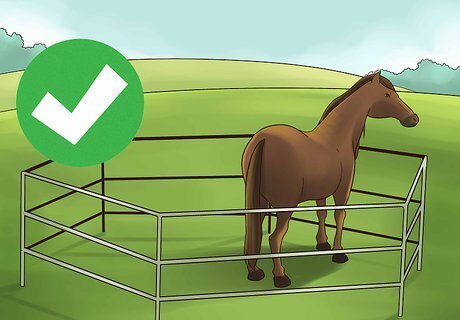
Set up your horse’s pen so that it can see other horses. If you live near other horses, such as those in an adjoining pasture, set up your horse’s pen so that it can see the other horses. Even seeing other horses in the distance can help a single horse feel more comfortable. If your land connects to another pasture, then make sure that your single horse can socialize with the horses next door, even if it’s through the fence.
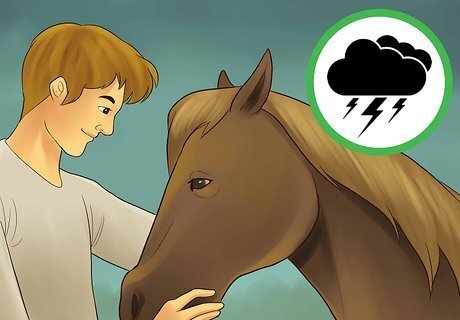
Be there for your horse. A single horse will require a lot of extra attention, especially during frightening events, such as a thunderstorm or fireworks. You will need to be present with your horse to help it feel as though it is with its herd during these times. Spend as much time as possible with your horse. Go to your horse during storms, loud noises, or changes to the horse’s environment, even if it’s at an off time or is inconvenient to you. Try to spend time grazing and walking your horse so that it has company doing normal horse activities.

Look for riding arenas where you and your horse can socialize. Taking your horse to an area arena where you can ride is beneficial to both you and the horse. You’ll be able to meet other riders and allow your horse to socialize with their horses. You may be able to find an arena where you can ride for free, but some require you to pay for a membership. Many riding barns/arenas host shows and group rides where you trailer into the facility with your horse.

Take group riding lessons. Many arenas that offer private lessons also offer group riding lessons. Sign up for a few group lessons to socialize your horse and meet other riders.
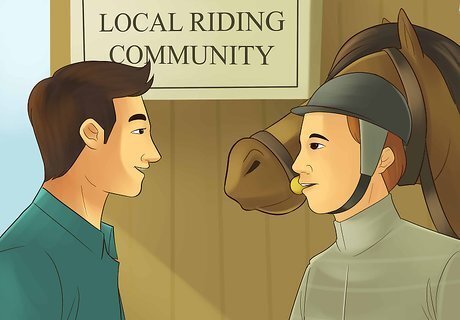
Reach out to the local riding community. Connect with other horse owners so that you can help each other socialize your horses. Schedule rides together and check in on each other’s horses to make sure that they don’t spend time alone. You and your horse both benefit from reaching out to the riding community since you will gain riding friends.
Introducing a Horse to a Herd
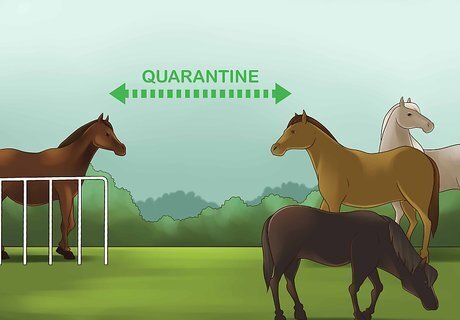
Quarantine the new horse, first. New horses should be quarantined from the rest of the permanent horses in a separate stall, or at least one a safe distance away from other horses, for at least a couple of weeks. This prevents the new horse from introducing any illnesses or viruses to the old horses.
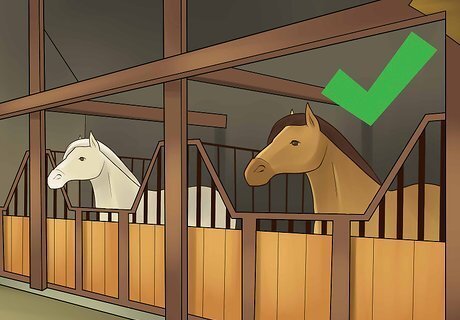
Prepare your facilities. Make sure that your pasture is safe for the horses to run because a new introduction to the herd can cause horses to try to flee. Block off any areas where horses can be trapped and attacked by the group. Prepare your stalls so that the horses will all have space to spend time together in the barn.

Remove hind shoes from the aggressive horses. Since the horses may become upset toward each other, remove the hind shoes of the aggressive horses and the new horse so that they can’t harm each other.
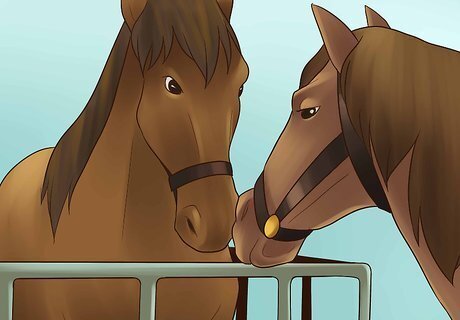
Allow the horses to see each other from far away. Place the horses in a field where they can see each other, but keep them separated with a fence so that the horses can’t harm each other. Start by introducing them nose to nose, separated by the fence. They should have their ears forward and be interested in one another. Snorting, stomping, tail swishing, and vocalization are signs that the horses may not be getting along initially. If the horses get upset, separate them and try allowing them to see each other for short periods of time.
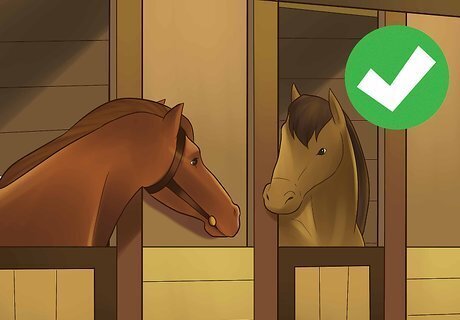
Stall the horses near each other. Placing the horses in stalls together will help them become acquainted in a safe way. It will also tell you if the horses are ready to be at pasture together because if they don’t get along in the stall then they might get aggressive in the pasture. The horses should be in separate stalls that are near each other. Do not place the horses in the same stall.

Partner a middle-ranked horse with the new horse. After the horses become familiar with each other, move a non-aggressive horse that is middle-ranked in the herd into the pasture with the new horse. This will allow the new horse to become acquainted with a herd member before joining the rest of the herd.
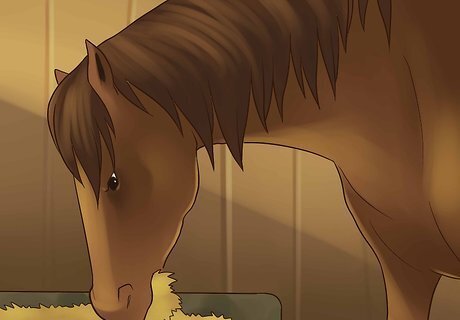
Feed the herd before introducing the new horse to the herd. Make sure your horses are all fed before you introduce the new horse to the herd. This will prevent food fights and lower their desire to fight each other.
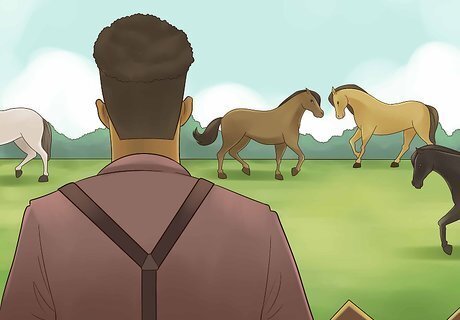
Put the horses out to pasture together. Allow the horses to spend time together in the same pasture, but watch them the entire time to make sure that the horses are friendly. Some snorting and squealing is normal and should subside after a few minutes. Continue to watch them for a few days until you’re sure that they are able to be safe together.
Giving Your Horse a Companion
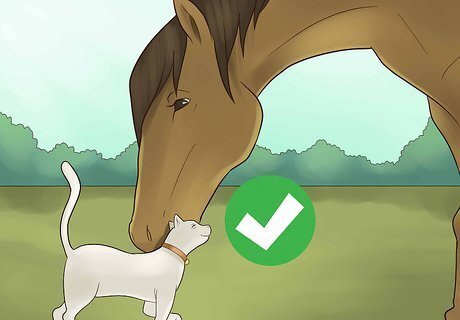
Choose an animal to pair with your horse. Consider getting an older or injured horse to act as a companion to your horse. Alternatively, you can pair your horse with another animal. Your best options are larger farm animals, such as sheep, goats, cows, or donkeys. You can turn your horse out with sheep, goats, or donkeys in the same pasture. Double check that your fencing is sufficient and safe enough for the smaller animal, too. It’s also possible to pair your horse with a dog if the dog is comfortable and respectful around horses. Cats can also be paired with a horse. Cats are better companions for horses who live in a barn, and they can also hunt barn rats.
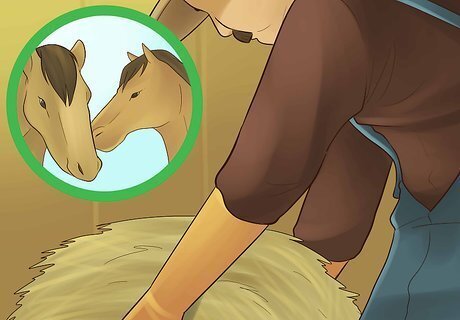
Make sure you can afford both animals. Two animals require more food and care than one, which will include vet visits. A second animal could also create additional demands on your facilities. For example, you may need to add soil or grass to your pasture more often. A companion horse is usually a non-working horse that is either old or has had an injury. These horses may not come with the demands of other horses and may be free to acquire.

Vaccinate your animals if necessary. Horses can be kept with other animals, but they may need more shots. When you keep a horse with another animal, your horse and possibly the other animals may need additional vaccinations. Your vet can confirm whether or not your animals will need additional care before being placed together. Your vet may also want to develop a health plan for your animals.

Introduce the animals during the daytime. Choose a neutral spot on your land to introduce the animals for a short period of time at first. Stay with them for the entire time they are together initially. Continue to bring the animals together until you are sure that they are friendly with each other. Once they are bonded, you can allow the animals to be together alone. Your horse should see its companion animal for the majority of the day. Start by having them in separate pens for a few weeks before putting them in one pasture together. Monitor your animals to make sure that their relationship remains friendly.
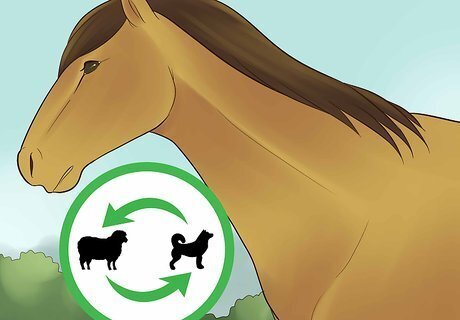
Try a different pairing if your horse and the animal don’t bond. If your horse doesn’t become friendly with the companion animal, you will need to try a new animal. Follow the same process to introduce the new animal to your horse.
Taking on a Boarder

Prepare to take in another horse. You should be able to keep a second horse with yours. However, check local ordinances to make sure that you are allowed to take money in exchange for housing another person’s horse. Make sure that you’ve made any necessary repairs or upgrades to your barn, pasture, and fences. If you cannot take money as a private citizen, you may be able to house the horse for free with the owner providing feed, supplies, and assistance. Do regular checks to make sure that the facilities are in good repair and safe for the horses.

Check your insurance coverage. You may need additional insurance coverage in order to take in a boarded horse. Review your coverage and purchase an additional policy if need be. You can add this cost to your boarding price. You may want to get a commercial equine insurance policy, especially if you decide to take on more than one boarder.

Set a price or negotiate labor. Figure out how much it will cost you to keep the extra horse on your property. Since the goal is finding a companion for your horse, consider negotiating a price with someone who owns a horse that your horse already knows from shared rides or visiting the arena. Include the cost of maintaining housing, feed, water, supplies, insurance, and keeping up your pasture. For a discounted price, the owner of the horse may be willing to help you care for their horse by mucking the horse’s stall, feeding the horse, and grooming the horse.

Draw up and sign a contract. You and your boarder need to sign a contract stating the terms of your arrangement, such as how long the horse will be boarding with you and what requirements each of you have for the care of the horse. Make sure you address the what-ifs, such as what if the horse refuses to eat, what if the horse gets sick, or what if the horse dies. It’s best to have a lawyer draw up this document if you can.
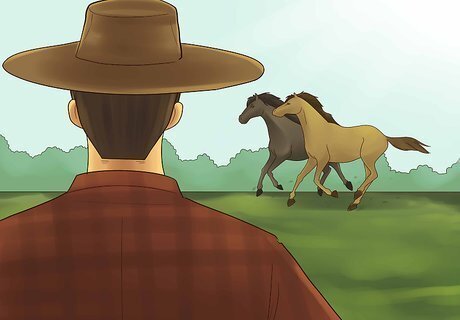
Introduce the horses. When the new horse arrives, bring both horses to a neutral location to make an introduction after the appropriate quarantine period. Stay with the horses at first, then stable or pen them near each other. Once you’re sure that the horses will get along, you can leave them alone together while they’re in the pasture. Remember that the horse you are boarding also needs socialization, so remember to think about the needs of both horses.
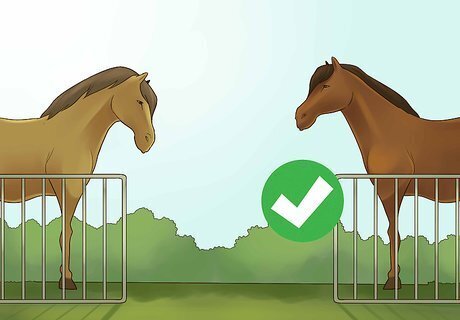
Monitor the horses. Continue to check on the horses to make sure that they remain on friendly terms. Horses who have only one companion will usually tolerate that companion even if they don’t like the other horse, but it’s still important to make sure that they don’t get aggressive toward each other.



















Comments
0 comment